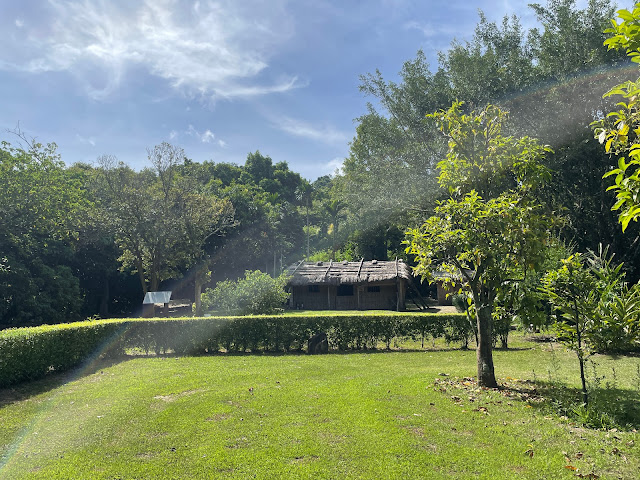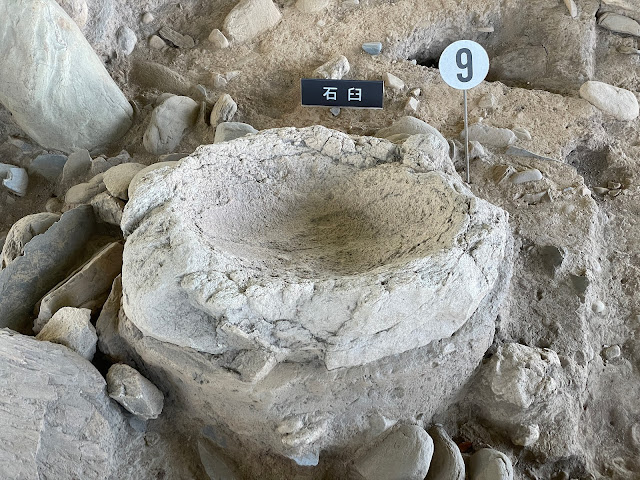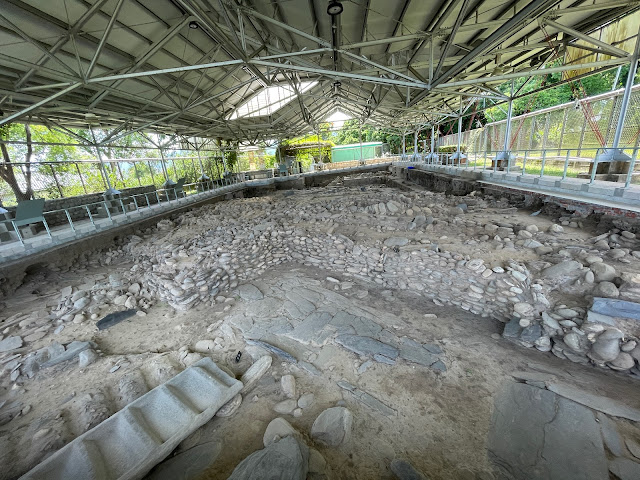2022/07/19-20
We attended the Hot Air Balloon Festival in Taitung after convincing my husband to go. We stayed in Taitung for only two days, primarily for the festival, but we also had the opportunity to visit other places. We attended the festival twice, once at night and once during sunrise. Unfortunately, the wind was too strong at night, resulting in fewer balloons being launched.
Additionally, we visited the Beinan Site and Longtian Village, which have many remnants from the Japanese era. We also made a stop in Hualien, specifically at a Japanese-era shrine. Lately, I've developed an obsession with Japanese buildings and shrines, even though I never had a desire to visit Japan. Perhaps I've become a bit bored with Taiwan and its architecture.
On our drive back along the coast road, we visited Nanrenshi, Sanxiantai, and even had the chance to see wild monkeys and the Amis Folk Center.
During our trip, my husband had a job interview with another company. He stayed in the car while I explored Beinan. Unfortunately, his interview was rescheduled and slightly disrupted our travel plans, as it was supposed to take place before we arrived in Taitung. Nonetheless, he managed to complete it. However, the signal in our accommodation wasn't strong enough for him to stay there, so he had to go to the nearby park.
We also had to shorten our trip because he had a second round of interviews. Wish him good luck anyway!
~ ~ ~ ~
So happy to be back in Taidong, although part of our travel plans was unexpectedly disrupted as my husband had a job interview. It was originally scheduled for yesterday, but there was a mistake with the date, so it's happening today instead. The drive from our home to Taidong city takes about 3.5 hours. We stopped only for lunch and wanted to head to our accommodation, but Grandma told us it was too early and we had to come back at 3 PM. With still two hours to spare, my husband had to find a place to do his interview. In the end, we drove to Beinan Site, as the park is quite large. My son Adrian and I walked around while my husband conducted his interview in the car. It's our second time visiting this park, but the first time seeing an actual archaeological site. When we were here three years ago, the place was closed for renovation.
Beinan Site (卑南遺址)
The moon-shaped stone pillar near the entrance of Beinan Cultural Park is considered one of the park's landmarks. The Beinan site, located at the southeastern tip of Beinan Mountain, is a representative site of the Beilin culture from the Neolithic Age in eastern Taiwan. According to archaeologists, the site dates back 5,300 to 2,300 years ago, with its most prosperous period being from 3,500 to 2,300 years ago. Covering an area of over 300,000 square meters, the Beinan site is the largest prehistoric settlement ever discovered in Taiwan. Numerous slate slabs and exquisite funerary objects have been unearthed at the Beinan site, making it the largest slate tomb ruins in the Pacific Rim and Southeast Asia. Beinan Cultural Park is the first archaeological site park in Taiwan. The Beinan site itself is quite extensive, covering an area of over 300,000 square meters.
Recognizing the significance of the Beinan site, Professor Song Wenxun proposed the construction of a field museum on-site in 1982. In 1988, the Beinan site was designated as a national first-class monument. In 1991, the central government decided to develop the site into the "Beinan Cultural Park." The National Taiwan Prehistoric Culture Museum was opened in August 2002.
In 1896, the early Japanese-born anthropologist Tori-Ren took two photos of the stone pillars at the Beinan site. Luye Zhongxiong was the first scholar to study the Beinan site as an archaeological site. In an article published in the 1930s by Yukio Utano, it was mentioned that there were numerous standing slate columns at the site. In 1945, Jin Guanhu and Guo Guozhi began the first excavation around the largest standing stone and uncovered buried pottery and house remains.
During the construction of Beinan Railway Station in 1980, a large number of remains and relics were exposed. Rescue archaeological work was carried out, yielding fruitful results. The excavation area, the number of unearthed stone plaques, and the quantity of relics set an unprecedented record in Taiwan's archaeological history, especially with the discovery of a large number of exquisite jade artifacts.
In addition to the Beinan site, other important sites include Zhabiao, Fushan, Donghe, and other locations where a significant number of agricultural tools such as sickles and stone knives have been unearthed. This suggests the importance of farming in the region. Coastal ruins have also yielded abundant fishing equipment, such as net pendants and hooks, highlighting the reliance on marine resources.
Hunting and farming were the primary livelihoods of the Beinanese culture. They hunted wild boars in the mountains and sika deer in the hills and plains. Cultivated grains included dry rice and millet, and fields were cleared using the "mountain burning" technique. Many agricultural tools, such as stone shovels, axes, and knives, have been discovered. Stone spears and sarcophagi were the main hunting tools. Although the settlement was located on the edge of Beinan Daxi, the villagers were not adept at fishing, and fish served only as supplementary food.
The long-term settlement led to the development of various technologies. Apart from agricultural and hunting tools made of stone, pottery was a common daily-use item, primarily used for water storage and cooking. Pottery was typically handcrafted, baked in the open air, and subjected to low firing temperatures. Common shapes include cans, pots, small-mouth bottles, as well as tools like ceramic spinning wheels, pottery pots, and spoons.
Exquisite jade artifacts best exemplify the aesthetics and craftsmanship of the tribe. They include headwear, earrings, neck ornaments (such as small jade bells), chest ornaments, wrist ornaments, arm ornaments (such as flared rings), as well as non-utilitarian sexual weapons, tools, and various unique styles. Among the different types, earrings display the most diverse range of shapes. The human body shape earring, in particular, has been selected as the emblem of the National Taiwan Museum of Prehistoric Culture. These jade articles were primarily ordinary decorations used by the tribe. After the individuals' death, they were buried as part of underground burials. Based on the intricacy of these jade artifacts, it is likely that some individuals specialized in making and trading jade jewelry.

















0 komentarze:
Post a Comment